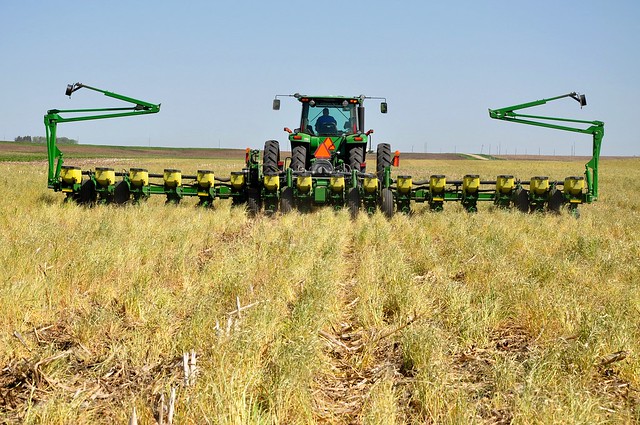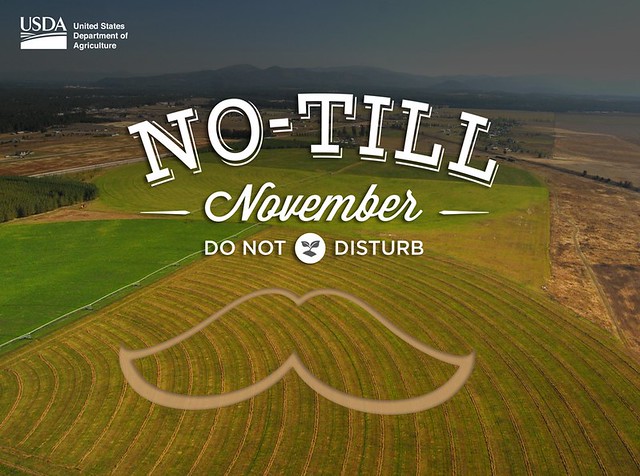
Many farmers till during the fall. This year, we encourage you not to. Leave it be, let it grow. Save time, money and improve your soil’s health by joining the farmers who observe “No-Till November.”
The idea for No-Till November came to Neil Sass, an agronomist with USDA’s Natural Resources Conservation Service (NRCS). “I’m always thinking about new ways to talk about soil health,” Sass said. “I thought ‘Hey, No-Shave November is a good way to highlight men’s health, why not promote No-Till November as a way to highlight Soil Health?’ It seemed like a pretty good fit.”

The analogy does fit. Soil is like the skin of the farm: it’s a nourishing barrier for what grows above and beneath. But whereas a shaving razor stops at the surface of the skin, tillage rips into the soil and can inflict harm.
“Tillage is a dramatic thing with respect to the soils,” said Sass. “For everything living in the soil, it’s akin to an earthquake, tornado and fire happening, all at the same time.”
Why is the practice still so popular? “It’s just something we’ve always done,” he said. Tillage has been practiced for generations, which means it can be accepted uncritically as a necessary part of farming. That used to be true, but not anymore.
As Sass explains, “We had to till for a while, just to grow crops. We didn’t have equipment and tools for weed control or preparation of the seed bed.” But steady advances in technology since the 1970s – both in farming equipment and crop genetics – mean that tillage is no longer necessary.
Repeated tillage undermines soil structure and reduces aggregate stability; it breaks down organic matter and drains carbon from the soil.
“Sometimes we say quitting tillage is like quitting smoking,” said Sass. “It’s hard. Even when you know the costs, quitting is hard.”
No-till is one of the key practices of soil health management systems. According to Sass, the benefits of no-till grow over time and spread far beyond your farm. With no-till, you can improve water quality through prevented erosion. Your soil structure will remain intact, able to absorb more water and handle heavy rain. No-till keeps your soil on your field and out of the watershed.
And if those aren’t enough reasons to “keep the stubble,” Sass proffers some bottom line benefits for farmers, too: No-till will save you time and money. You’ll spend less time on your tractor. You’ll use less fuel. You’ll have less wear and tear on your equipment. No-till is a win-win for your soil and for your pocketbook.
“When you have the support of trillions of microbes, you can grow more with less,” Sass said.
This fall, consider the benefits of no-till through the lenses of soil health, water quality, economics and beneficial microbes. NRCS helps farmers, ranchers and forest landowners plan and implement a wide variety of conservation practices, including no-till.
To learn more about available conservation practices, contact your local USDA Service Center. You can also learn more on NRCS’ Soil Health webpage.


